Climate Vulnerability of Germany #Climate Change
The earth is getting hotter. Most scientists are sure this is mainly due to anthropogenic emissions of greenhouse gases. To give a wake-up-call to the humanity and to find out who is mainly affected the President of the Maldives founded the Climate Vulnerable Forum in 2009. It created the Climate Vulnerability Monitor which analyzes four main areas: health impact, weather disasters, habitat loss and economic stress. Germany is with US and Japan amongst the largest developed economies which will experience the largest economic stress in absolute terms.
Another indicator which calculates the vulnerability to climate change of a country is the Global Adaptation Index (GAIN). It takes also the preparedness of a country into account to be able to cope with the climate change challenges. The GAIN can help to prioritize investments to make the response more efficient.
Looking closer at the “Vulnerability (exposure to climate-related hazards, sensitivity to their impacts and the capacity to cope with those impacts)”, Germany’s exposure to significant climatic variations remained the same, the sensitivity decreased and its “current ability to increase resilience” increased sharply between 2007 and 2008 mainly due to an increase of the agricultural technological capacity.
The Readiness evaluates the speed and efficiency of adaptation, where Germany increased since 1997 until 2005 and remained on a high level since then. The GAIN ranks Germany as number 9 in terms of vulnerability and readiness and states that Germany may need little help to overcome adaptation challenges. Compared with the Climate Vulnerability Monitor the GAIN goes more in detail and gives the possibility to access the data.
The National Communication states possible effects of climate change which could have negative or positive regional impacts. According to both indicators and the national communication the country seems to be aware of these effects and has the capability to cope with the challenges.
Resources, last accessed 09.02.2012:
DARA and the Climate Vulnerability Forum (2010) Climate Vulnerability Monitor 2010, http://daraint.org/wp-content/uploads/2010/12/CVM_Complete-1-August-2011.pdf
Global Adaptation Institute (without year) Germany, http://index.gain.org/country/germany
United Nations (2010) Fifth National Report of the Government of the Federal Republic of Germany, http://unfccc.int/resource/docs/natc/deu_nc5_resubmit.pdf
Environmental Impact Assessment for the third runway of the Munich Airport
The Munich airport would like to build a third runway to cope with the estimated increase to 58.2 million passengers in 2025. The current area of the airport comprises 1,560 hectares, from which nearly 60% are green spaces. The planned runway should have a length of 4,000 meters and a width of 60 meters. The likely land use outside of the existing airport would be around 970 hectares.
The Environmental Impact Assessment (EIA) has already been done in 2006 and took a look at following sectors: Humans (health and well-being), animals (wild animals and their habitats), plants, biodiversity, soil, surface waters, groundwater, air, climate, landscape, cultural goods and possible interactions.
The main impacts would be on human settlements north and northeast of the airport because of the increasing air traffic noise during operation. «Attaching» can claim for compensations due to the increase of the continuous sound level. Additionally the habitat «Erdinger Moos» of wild animals would be affected due to the land consumption of the third runway, the noise during construction and operation and the lighting during the operation of the airport. The connectivity of the habitats would be interrupted and could hinder the migration and spread of animals and plant species.
Within the area of the planned runway is a monument, it would need a archaeological exploration before the constructions. In addition there would be a medium impact on the biodiversity in this area and on the soil. Apparently the overall appearance of the landscape would be changed too.
The airport endeavors to make its process transparent and to include the affected neighborhoods early in the planning process. It even is consent to pay 100 million Euros for compensation – without legal obligation. Nonetheless the citizens of Munich try together with NGOs to stop the process. They are collecting signatures and initiated a referendum which will be held on the 17.06.2012. At this day all citizen of Munich can vote for or against the third runway.
Resources (German), last accessed 07.02.2012:
Flughafen München (2006) Umweltverträglichkeitsstudie, http://www.dfld.de/Andere/MUC/ROV/umweltstudie_blasy.pdf
Flughafen München (without year) Dritte Start- und Landebahn, http://www.muc-ausbau.de/bahn3/index.jsp
Süddeutsche.de (2012) Flughafen München: Zehn Fakten, http://www.sueddeutsche.de/muenchen/freising/flughafen-muenchen-zehn-fakten-ein-prosit-auf-das-fernweh-1.1124700
Iberdrola and its CSR Strategy #Sustainability
Groupwork: Federico Camino, Marie Glück, Lauren Musiello, Amaya Sayas
Iberdrola is a multinational utility company founded in 1901. The headquarters are located in Bilbao, Spain. Iberdrola is national number one and one of top 5 of energy companies in the world with a strong International presence, operating in over 40 countries; significant trading throughout Europe, Switzerland, Germany, the Netherlands, France, Portugal, Spain and Belgium.
The most important mergers started in 1944 with Hidroeléctrica Ibérica and Saltos del Duero which resulted in Iberduero. Then in 1963 Iberdruero and Saltos del Sil mergered. In 1991 Hidroeléctrica Española and Iberduero merged and created Iberdrola how it is today. The following graph illustrates the progression of the turnover, the gross margin, the EBITDA and the net profit from 2000 to 2010.
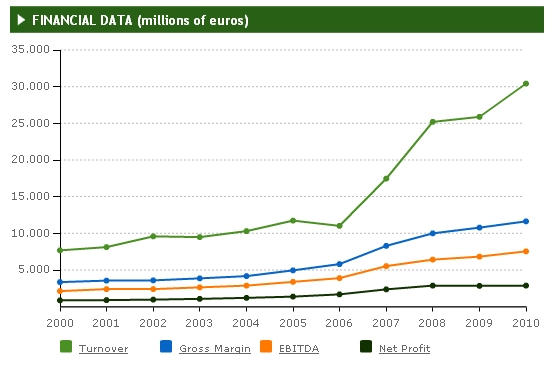
Source: Iberdrola (2010) Annual Report, Graph Generator, http://www.iberdrolainforme2010.com/UK/configurador_graficos.php
The company aims to create long-term sustainable growth with the industrial project which includes “internationalisation, basic business, clean energies, optimising operations and financial solidity” (Iberdrola 2012 About us). Thanks to this project the company has many pillars and a stable base even in current crisis times. With its 30,000 employees it managed to create value and is investing heavily into renewable energies, it wants to be able to provide the cleanest energy to the world. Watch here a short movie (0:58), how Iberdrola is contributing to a sustainable development with its engagement in electric cars:
[youtube]http://www.youtube.com/watch?v=-wgOMJ7my7I[/youtube]
Stakeholder Study
|
Stakeholder |
Company needs |
Impor- |
Stakeholder needs |
|
Shareholders: ACS, Catar, Ktxabank, BFA, Unicaja, Caja de España-Duero, Sodena, Public Shareowners |
Funds, trust, loyalty, stability, good governance |
High |
Benefits, risks reduction, reputation, law abiding |
|
Governments: Spain, United Kingdom, United States, Other 37 countries |
Law enforcement, commercial/property rights protection, equal/privilege treaty than competition, tax/funds incentives (for some types of energy) |
High |
Tax payment, law abiding (commercial, environmental) |
|
Market regulation entity |
Transparency, confidentiality, information |
Medium |
Market rules abiding (volumes, payment) |
|
Grid operator |
Technological parameters, operation instructions |
Medium |
Instructions abiding, reliability, availability |
|
Employees: Spain 11,899; UK 8,210; USA 5,001; rest 4,531 |
Productivity, loyalty, motivation, responsibility, innovation |
High |
Salary, participation, reputation, responsibility (to be able to decide), working conditions, recognition, development, formation |
|
Suppliers: Gas, Uranium, Services |
Supply reliability, brand image (where the product comes from), low price |
High |
On-agreement payment, loyalty |
|
Customers: Other distributors, final user |
Sales, loyalty, information about demand |
High |
Reliable and predictable supply, low price |
|
Community: Communities where the company generates, Communities where the company distributes |
Response to emergency plans, no interference with activities |
Very high |
Low impact (environmental), use of local products/services, emergency plans |
|
Future communities: Communities that might be affected by global warming or nuclear pollution |
– |
Very high |
Reliable containment, compensative actions |
|
S t akeholder |
Company needs |
Importance |
Stakeholder needs |
|
Stockholders: ACS, Catar, Ktxabank, BFA, Unicaja, Caja de España-Duero, Sodena, Public Shares owners |
Funds Trust, Loyalty Stability, Good Governance |
High |
Benefits, Risks reduction, Reputation, law abiding |
|
Governments: Spain United Kingdom United States Other 37 countries
|
Law enforcement, Commercial/property rights protection, Equal/privilege treaty than competition, Tax/funds incentives (for some types of energy) |
High |
Tax payment Law abiding (commercial, environmental)
|
|
Market regulation entity |
Transparency Confidentiality Information |
High |
Market rules abiding (volumes, payment) |
|
Grid operator |
Technological parameters Operation instructions |
High |
Instructions abiding, Reliability, Availability |
|
Employees: Spain 11.899 UK 8.210 USA 5.001 Rest 4.531 |
Productivity, Loyalty, Motivation, Responsibility, Innovation |
High |
Salary, Participation, Reputation, Responsibility (to be able to decide), Working conditions, Recognition, Development, Formation |
|
Suppliers: Gas Uranium Services |
Supply reliability Brand image (where the product comes from) Low price |
High |
On-agreement payment Loyalty
|
|
Customers: Other distributors Final user |
Sales, Loyalty, Information about demand. |
High |
Reliable and predictable supply Low Price |
|
Community: Communities where the company generates Communities where the company distributes |
Response to emergency plans. No interference with activities. |
High |
Low impact (environmental) Use of local products/services Emergency plans |
|
Future communities: Communities that might be affected by global warming or nuclear pollution |
– |
High |
Reliable containment Compensative actions |
CSR Strategy
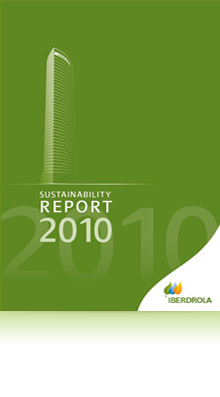 Forest L. Reinhardt from Harvard Business School, when asked about risk in energy companies, stated: “The fundamental question for energy leaders is what risks they confront and how they can most cheaply reduce the exposures that they don’t want while getting compensated for bearing exposures that they want to retain.” Energy companies are volatile and the most detrimental risk is failure in management. Failure is safety, checks and balances can result in lives lost. Therefore, Iberdrola has highly trained and skilled employees that work to ensure the Iberdrola name bares no consequential risk in the safety and operation of the business.
Forest L. Reinhardt from Harvard Business School, when asked about risk in energy companies, stated: “The fundamental question for energy leaders is what risks they confront and how they can most cheaply reduce the exposures that they don’t want while getting compensated for bearing exposures that they want to retain.” Energy companies are volatile and the most detrimental risk is failure in management. Failure is safety, checks and balances can result in lives lost. Therefore, Iberdrola has highly trained and skilled employees that work to ensure the Iberdrola name bares no consequential risk in the safety and operation of the business.
The Spanish utility, Iberdrola may have to pay around 400 million Euros to the Spanish government over the next three years, due to the government´s changes to the tax-payment calendar. This news could make investors uneasy due to the newly imposed liability. Solvency is currently not an issue but with this new tax it may become a problem. Oddly, enough profits continue to rise. Iberdrola has not been thrown from the money train. The majority of press is positive for Iberdrola and their CSR program will only promote more business and attract more investors.
Iberdrola develops social responsibility principles and practices aimed to meet the necessities and expectations of its stakeholders regarding the economical, environmental and social areas. This company´s philosophy is stated through ten points:
- Comply with applicable law in the countries in which it does business, with the supplemental adoption of international provisions and guidelines in those countries in which the legal framework is inadequate.
- Adopt cutting-edge corporate governance practices, in line with good governance recommendations generally recognized in international markets, based upon corporate transparency and mutual trust in the relationships with shareholders and investors.
- Respect human rights and, in particular, those the violation of which degrades workers, which entails the opposition to child labor and to forced or compulsory labor.
- Develop a favorable employment relationships framework based on equality of opportunity, non-discrimination and respect for diversity, promoting a safe and healthy environment, and facilitating communication with the workforce.
- Develop responsible practices in the chain of value, establishing transparent, objective and impartial processes with suppliers and providing users with all relevant information regarding the products and services sold.
- Promote a culture of respect for the natural environment, reducing the environmental impact of the Company’s activities, defending biodiversity and fostering information and training in this culture.
- Favor transparency and free market rules, rejecting bribery, corrupt practices or other types of contributions aimed at obtaining corporate advantages, and respecting the rules of free competition.
- Promote socially responsible actions at those companies in which the Company has control or management capacity, and also advance such actions at supplier companies through the processes of selection and hiring.
- Encourage communication and dialogue with the various groups related to the Company’s activities, in order to match corporate values and social expectations.
- Disseminate relevant and truthful information regarding the activities carried out and subject such information to internal and external verification procedures that ensure its reliability and encourage the continuous improvement thereof.
Personal opinion
Every business’ main goal is to create wealth and welfare that should not be against the performance of an ethical and social responsible business practice. The Institutional Relations Manager initiated the CSR activities recognizing the positive effects of CSR policy. A strong CSR mission statement positively effects the company by improving employee recruitment and retention that creates a pleasant interpersonal work place. The positive reputation attracts investors and customers alike. Iberdrola CSR program markets innovation and ecoefficiency ensuring customer loyalty. The CSR focus is through the arts, social investment, education and most importantly the environment.
Selected projects implemented by Iberdrola:
- Maternity and family support policies: make it easy for women to reconcile work and maternity by implementing flexible work schedules.
- Environmental projects to protect biodiversity: to reduce environmental impact Iberdrola cooperates with organisations such as the Spanish Ornithology Society, ADENA/WWF or Fundación Vida Sostenbile focusing on biodiversity preservation initiatives.
 CSR projects prove to the stakeholders their commitment to responsible business. Additionally, CSR projects raise the communities awareness and creates marketing opportunities. They are focused on important stakeholders, covering relevant needs of the community.
CSR projects prove to the stakeholders their commitment to responsible business. Additionally, CSR projects raise the communities awareness and creates marketing opportunities. They are focused on important stakeholders, covering relevant needs of the community.
In our opinion CSR should not be outsourced to special projects which are good for positive headlines. Instead CSR should be implemented into the company’s culture and therefore into all its business related activities. It seems that Iberdrola accepts the challenges related to its business and if it really walks its talk it can be a benchmark for the entire energy sector.
The main sources of greenhouse gas emissions in Germany #Climate Change
In the Kyoto Protocol Germany committed to reduce the emissions of all six Kyoto gases1 by 21 % compared to the base year (1990 or 1995) by 2012. In 2007 Germany reduced its emissions by 22.4 % compared to the corresponding level. Some main causes for the reductions are an economical reorganization in the first years of the eastern states of Germany with the reduced use of brown coal and the reinforced development of renewable energies. Furthermore the government conducts an active climate protection policy and implemented long term laws to reduce emissions of Kyoto gases.
CO2 was accountable for 87.9 % of greenhouse-gas emissions in 2007 and therefore the main greenhouse gas (GHG) emitted by Germany. The second largest emitted share with 5.8 % is nitrous oxide. Methane amounts to 4.4 % and the other Kyoto gases come to a total of 1.8 % of all emitted GHGs by Germany. The following figure illustrated the successful progress of Germany’s reduction of GHGs from 1990 to 2007, at the same time growing its economy by 41.7 % and its population by 3.1 %.
The main sources of GHG emissions in Germany in 2007 were the Energy Industries which emitted 388.13 million of tons of CO2 equivalent, followed by Transport with 154.30 and Manufacturing Industries and Construction with 121.44 million of tons of CO2 equivalent. The following graph illustrates the distribution of the total emissions of 979.87 million of tons of CO2 equivalent:
Interesting are the various assumed climate and energy policies for the forecasts of the emissions in the Fifth National Report of the Government of the Federal Republic of Germany like:
- Increased share of electricity production from renewable energies;
- changes in the EU emissions trading scheme, like including industrial N20 emissions within the trading scheme;
- additional requirements for fuels;
- less electricity consumption due to more energy effective measures; and
- Governmental support for CO2-oriented building-remediation.
1The Kyoto gases are: carbon dioxide (CO2), methane (CH4), nitrous oxide (N2O), hydrofluorocarbons (HFCs), perfluorocarbons (PFCs) and sulphur hexafluoride (SF6)
Resources, last accessed 28.01.2012:
European Environment Agency (2011) EEA greenhouse gas – data viewer, click here to see the predefined views, http://www.eea.europa.eu/data-and-maps/data/data-viewers/greenhouse-gases-viewer
Umweltbundesamt (2011) Thema: Klimaänderungen, http://www.umweltbundesamt-daten-zur-umwelt.de/umweltdaten/public/theme.do?nodeIdent=2842
United Nations (2010) Fifth National Report of the Government of the Federal Republic of Germany, http://unfccc.int/resource/docs/natc/deu_nc5_resubmit.pdf
United Nations (without year) Land Use, Land-Use Change and Forestry (LULUCF), http://unfccc.int/methods_and_science/lulucf/items/3060.php
Urban Planning: put the people in the middle!
 Last week we had a very interesting class on urban planning and sustainable cities by Dan Hill from Smart Urbanism. We talked about the challenges with the rapid urbanism and which problems it creates. A very relevant topic when considering the situation that more than the half of the world population lives in urban areas. It made me aware of how complex the issue is and how many stakeholders you actually have to involve into an urban planning process to be successful. The most sustainable project is one which works for the people. But still, the main focus is on environmental and economic sustainability. Unbelievable how many buildings have been built and have to be demolished again because the people don’t want to life in it. This shows the importance and at the same times the challenge to include the social network. It is invisible and difficult to measure. It gives life and is vital to the city.
Last week we had a very interesting class on urban planning and sustainable cities by Dan Hill from Smart Urbanism. We talked about the challenges with the rapid urbanism and which problems it creates. A very relevant topic when considering the situation that more than the half of the world population lives in urban areas. It made me aware of how complex the issue is and how many stakeholders you actually have to involve into an urban planning process to be successful. The most sustainable project is one which works for the people. But still, the main focus is on environmental and economic sustainability. Unbelievable how many buildings have been built and have to be demolished again because the people don’t want to life in it. This shows the importance and at the same times the challenge to include the social network. It is invisible and difficult to measure. It gives life and is vital to the city.
Projects which consider the community and actually build something what meets the needs of the community will last longer, because if the community feels responsible for it, it will take care of it and maintain it. The thing is to integrate them early and make them understand.
“Tell me and I forget. Show me and I remember. Involve me and I understand.” Chinese proverb
Clearly there will be trade-offs as well. The process might take longer or it is not that prestigious like it should be. But does this really outweigh the engagement of the community which actually should live there? Definitely: No!
«We need to walk, just as birds need to fly. We need to be around other people. We need beauty. We need contact with nature. And most of all, we need not to be excluded. We need to feel some sort of equality.» Enrique Peñalosa
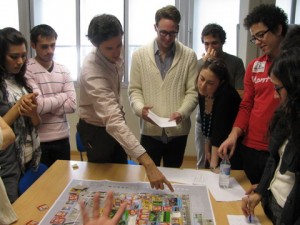 What if we focus not on the trade-offs but on the mutual benefits like R. Edward Freeman suggests in the Stakeholder Theory? I am sure there can be found many common interests among the individual interests, e.g. the architect is eager to design, the people need space to live and private and public open air areas, the municipality aims to get reelected and the developer is waiting for the new contract to develop the next area. All this can be achieved if all stakeholders come on one table and discuss. A great tool is to draw down the area and to have tokens which can be moved around. We played this urban planning game and had heated debates, however it brings up all interests and the solution is visible.
What if we focus not on the trade-offs but on the mutual benefits like R. Edward Freeman suggests in the Stakeholder Theory? I am sure there can be found many common interests among the individual interests, e.g. the architect is eager to design, the people need space to live and private and public open air areas, the municipality aims to get reelected and the developer is waiting for the new contract to develop the next area. All this can be achieved if all stakeholders come on one table and discuss. A great tool is to draw down the area and to have tokens which can be moved around. We played this urban planning game and had heated debates, however it brings up all interests and the solution is visible.
Further Information:
Smart Urbanism: http://www.smarturbanism.org.uk/
Stakeholder Theory from R. Edward Freeman: http://www.youtube.com/watch?v=Ih5IBe1cnQw
Knowledge is power – the MDGs in Latin America #Sustainability
In 2000 the United Nations agreed on eight Millennium Development Goals (MDGs) to stimulate development by enhancing social and economic conditions in the poorest regions of the world. The following eight goals should be reached in 2015:
- Eradicate extreme poverty and hunger
- Achieve universal primary education
- Promote gender equality and empower women
- Reduce child mortality rates
- Improve maternal health
- Combat HIV/AIDS, malaria, and other diseases
- Ensure environmental sustainability
- Develop a global partnership for development
I will focus in Latin America & the Caribbean on the second goal «Achieve universal primary education», which links directly to the right to education. I believe that it is one key towards closing the gap between rich and poor. The goal is specified in Target 2.A: Ensure that, by 2015, children everywhere, boys and girls alike, will be able to complete a full course of primary schooling. To monitor this target the United Nations defined the following three indicators:
2.1 Net enrolment ratio in primary education
2.2 Proportion of pupils starting grade 1 who reach last grade of primary
2.3 Literacy rate of 15-24 year-olds, women and men
Measuring the first indicator gives an increase in the adjusted net enrolment ratio in primary education from 93 % in 1998/1999 to 95 % in 2008/2009 in Latin America & the Caribbean. This is a good ratio compared with other regions, for example with Sub-Saharan Africa, which has just 76 % children enrolled in primary education in 2008/2009.
According to the following graph, which shows the progress of the literacy rate in the world, Latin America & the Caribbean increased its youth literacy rate from 92 % in 1990 to 97 % in 2009. This is a quite high level and gives hope that Latin America & the Caribbean can reach the second MDG.
The call for primary education as a MDG shows how important this goal became for the international society. After declaring it a right, action is taken to enforce it and every country must provide the opportunity for their children to obtain primary education.
“Being poor, female or living in a conflict zone increases the probability that a child will be out of school” (United Nations)
This quotation shows the challenge to provide primary education to all children in the world and enable them to have better chances in the future. Good education is directly linked to better job opportunities, thereby a better income and hence better health service and a higher quality of life. Especially in Latin America & the Caribbean where the social inequalities are high, education can help to close the gap and ensure more equal opportunities.
Watch here a movie how the Inter-American Development Bank (IDB) promotes education in Latin America and the Caribbean and hence contributes to reach the MDGs:
[youtube]http://www.youtube.com/watch?v=0QXa0ifgqQY[/youtube]
In the video you can see that there are improvements, but it is not sufficient to have enough schools, the teaching must have a certain standard. The nicest building doesn’t help if the teachers or pupils don’t go to school or if there is not enough or inadequate educational material. Like mentioned in the video in my previous blog DP #4: Challenges with the evaluation of development aid projects Esther Duflo states that deworming the children leads to a higher school attendance rate. This might not be the intuitive solution one has in its mind in order to increase education ratio. Anyhow, it seems to work and for every 100 $ you invest, you get 28.6 years of extra schooling.
In conclusion Latin America & the Caribbean are on a good way to fulfill the second MDG on primary education, but still they have to overcome challenges like lacking access to education and the social inequalities. Additionally the region should not remain on the MDGs but it has to move further to improve access and increase secondary education.
Resources, last accessed 17.01.2012:
ECLAC (1997) Poverty and Income Distribution in the Region have worsened, http://www.eclac.org/publicaciones/xml/7/4687/index.htm
OECD (without year) The OECD and the Millennium Development Goals, http://www.oecd.org/document/37/0,3746,en_2649_33721_34087845_1_1_1_1,00.html
UNDP (without year) Where do we stand?, http://www.beta.undp.org/content/undp/en/home/mdgoverview/mdg_goals/mdg2/where_do_we_stand.html
United Nations (2011) The Millennium Development Goals Report 2011, http://www.un.org/millenniumgoals/11_MDG%20Report_EN.pdf
United Nations Statistic Division (2008) Official list of MDG indicators, http://unstats.un.org/unsd/mdg/Host.aspx?Content=Indicators/OfficialList.htm
DP #4: Challenges with the evaluation of development aid projects
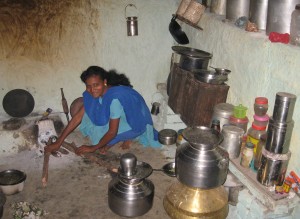 In 2010 the EU spent 53.8 billion Euros on Official Development Assistance (EU2011). What did it change? Lives, mindsets, behaviors? Laws, access to resources or education? A correct answer to this question is impossible because in many development aid projects the people know only the inputs and not the real impacts it had. Reviewing the project appraisals of the World Bank in 2000 shows that only 10% contain «planned impact evaluations» (Rawlings 2005). But evaluation is important for future learning and accountability (DAC 1991) to allocate the assigned money into projects with a high impact. The importance of evaluation increased further due to the claims that many years of development aid did not contribute positively to the development of a country.
In 2010 the EU spent 53.8 billion Euros on Official Development Assistance (EU2011). What did it change? Lives, mindsets, behaviors? Laws, access to resources or education? A correct answer to this question is impossible because in many development aid projects the people know only the inputs and not the real impacts it had. Reviewing the project appraisals of the World Bank in 2000 shows that only 10% contain «planned impact evaluations» (Rawlings 2005). But evaluation is important for future learning and accountability (DAC 1991) to allocate the assigned money into projects with a high impact. The importance of evaluation increased further due to the claims that many years of development aid did not contribute positively to the development of a country.
To standardize the understanding of evaluation the Development Assistance Committee (DAC) of the OECD designed already in 1982 five evaluation criteria: relevance, effectiveness, efficiency, impact and sustainability. Many international organizations use them to analyze the impact of their development aid projects.
However there might be evaluation, but too much data gained or not the right data, hence no proper result can be found for future learning. What makes the evaluation difficult is the asymmetry of the interests. Usually the donor wants to evaluate the development aid project in order to know that the money was used in the correct way. The recipient is only interested if the evaluation «lead(s) to future project possibilities» (Nagao 2006). Another asymmetry is the time horizon. The donors are spending a finite time with the project and want visible results within this horizon. The developing country is more interested in the long term impact of the project on its development (Nagao 2006). This asymmetry could lead to projects which are designed to have tangible outputs within 2-3 years and do not necessarily contribute to a sustainable development of the country.
The change of development aid projects and its complexity add further challenges on the evaluation. The Millennium Development Goals and multi-donor relationships in projects ask for enhanced accountability and increase complexity. These international expectations on aid increase the pressure even further and stress the tension between meeting the short term needs and addressing sustainable development in the long term.
Another consideration is the tension between standardized processes and the local conditions. One the one hand it should be simple and easy to apply and give a certain standard to be comparable as well. On the other hand the project should serve the community and be appropriate on the local level. This might not be easy to balance every time. Additionally it is difficult to measure the real impact because we cannot always determine cause and consequence – there are years lying in between.
However I believe that evaluation is an important topic which should be seriously addressed and added from the beginning in every project. Just if we know the outcomes we know how to go on further and which measures have actually the biggest impact (and not the one we think might have the biggest impact). Watch this movie about a talk from Esther Duflo where she finds answers to some urgent question with the help of randomized studies (16:47 min). I know that randomized studies raise new questions and ethical concerns, but isn’t it not worse to spend money on the measure where the impact is lower just because we don’t know?
Resources, last accessed 11.01.2012:
Development Assistance Committee (1991) Principles for evaluation of development assistance, http://www.oecd.org/dataoecd/31/12/2755284.pdf
EU2011 (2011) Development aid: additional efforts needed, http://www.eu2011.hu/news/janos-martonyi-eu-acp
Nagao M (2006) Challenging times for evaluation of international development assistance, http://www.aes.asn.au/publications/Vol6No2/Challenging_times_for_evaluation_of_international_development_assistance.pdf
Rawlings L (2005) Operational reflections on evaluating development programs, page 200, http://books.google.es/books?hl=de&lr=&id=W65uReMt5XAC&oi=fnd&pg=PA193&dq=Rawlings+Operational+reflections+on+evaluating+development+programs&ots=tClfUViija&sig=AA4IdD8myhUZ_H-9dI2PZMcsheo&redir_esc=y#v=onepage&q&f=false
The biggest offshore wind farm #Project Management
In September 2010 the currently largest offshore wind farm in the world was completed in Thanet, Kent (UK). It consists of 100 turbines which have a total capacity of 300 MW. This is enough to provide electricity to more than 200,000 homes per year. The wind farm makes «a significant contribution to the aim of a five-fold increase in the UK’s renewable energy resource by 2020» (BBC 2006). The total offshore wind energy generated in the UK amounted in September 2010 to 1,314 MW, more than the rest of the world with 1,100 MW. Still there is lot more to do than to build one offshore wind farm and the UK could struggle to provide 15 % of overall energy from renewables by 2020.
The wind farm got its planning permission in December 2006 and was accomplished by Vattenfall, a Swedish energy company. Vattenfall bought the project company Thanet Offshore Wind Ltd in 2008 and is still the operator of the wind farm.
During the planning and execution phase the company faced several problems which lead to a delay. Vestas, the supplier of the turbines, withdrew its offshore wind turbine from the market due to technical problems in early 2007. One year later the turbines were on the market again and the constructions could continue. Oppositions came from environmental groups, which were concearned about the environmental impact. To deal with this interests Thanet Offshore Wind Ltd released a Summary of Environmental Impact in 2007.
The project shows how important it is to deal with external stakeholders. Not to consider them can delay the project or can even result in a complete failure if there is bitter opposition. The best would be to include important stakeholders early into the planning phase and deal with their concerns. A good risk management can identify them and address them accurately. Such a huge project is not possible without good project management and availability of resources. Beneficial for the realization of such a big project is a long term legal framework which can increase planning reliability.
Resources, last accessed 04.01.2012:
BBC (2006) Offshore wind farms get go-ahead, http://news.bbc.co.uk/2/hi/uk_news/england/kent/6188133.stm
BBC (2010) Largest offshore wind farm opens off Thanet in Kent, http://www.bbc.co.uk/news/uk-england-kent-11395964
Reuters (2008) UPDATE 1-Vattenfall to build UK’s biggest wind farm, http://www.reuters.com/article/2008/11/10/vattenfall-idUSLA62270320081110
The Telegraph (2010) World’s largest offshore wind farm opens off Kent, http://www.telegraph.co.uk/earth/earthnews/8018828/Worlds-largest-offshore-wind-farm-opens-off-Kent.html
Vattenfall (2011) Thanet Offshore Wind Farm, http://www.vattenfall.co.uk/en/thanet-offshore-wind-farm.htm
Vestas (2008) Company announcement from Vestas Wind Systems A/S, http://www.vestas.com/files//Filer/EN/Investor/Company_announcements/2008/080218-MFKUK-11.pdf
Energy-saving measures for buildings in Germany #Energy Planning
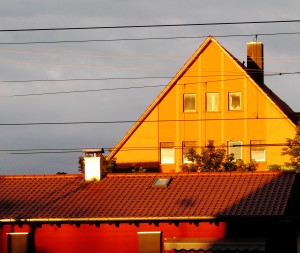 Many buildings in Germany need too much energy and have high CO2 emissions. Nearly 40 % of the total final energy consumption is used for heating and warm water. To improve this situation the German government decided to support energy-saving measures in three areas:
Many buildings in Germany need too much energy and have high CO2 emissions. Nearly 40 % of the total final energy consumption is used for heating and warm water. To improve this situation the German government decided to support energy-saving measures in three areas:
- CO2-Program for comprehensive renovation of one building,
- «Modernize living space» for individual energy measures and
- «Ecological Construction» for new buildings as energy efficient houses and passive houses.
With these actions the government aims to reduce living expenses, create jobs and support climate protection.
The government started with this program in 2001, since 2007 the improved conditions offer cheaper interest rates and grants for the clearance of the debt. The result within just one year was the energy-saving renovation of about 400,000 buildings and the construction of 100,000 new energy efficient houses.
The CO2-Program includes the modernization of the heating system, replacement of windows, insulation of exterior walls, basement floors and roofs. Through these measures the energy consumption can be reduced by one third to one half. To give incentives to private persons to implement energy-saving measures into the buildings there are credits with interest subsidy or tax relieves.
Since 2007 the government promoted additionally energy-saving measures in schools, day care centers and buildings of public charities. For this purpose it made € 200 million a year available for interest subsidy of loans until 2009. Furthermore it supported municipalities to make schools, kindergartens and youth centers energy efficient with € 600 million. These measures were noticeable on the labor market where 220,000 jobs were saved or newly created.
Overall the measures of the German government help to make Germany more energy efficient. Until 2020 Germans can save up to € 50 billion on heating costs. It should be kept in mind that the rents do not increase too much due to these measures. Important is to change the mindset of the society that people do not construct cheap buildings to live expensive afterwards. One solution can be to build wooden houses: This construction style improves the condition of the air of a room and has the best data in heat insulation.
Resources (German), last accessed 29.12.2011:
Bundesregierung (2008) Wer dämmt, gewinnt: die energetische Gebäudesanierung, http://www.bundesregierung.de/Content/DE/Magazine/MagazinVerbraucher/002/s2-die-energetische-gebaeudesanierung.html
Bundesregierung (2011) Bundesregierung fördert Gebäudesanierung weiter, http://www.bundesregierung.de/Content/DE/Artikel/2011/05/2011-05-12-merkel-haus-und-grund.html
Sichere Immobilie (without year) Immobilien Sanierung – Die neuen Pläne der Bundesregierung, http://www.sichere-immobilie.de/immobilien-sanierung-die-neuen-plaene-der-bundesregierung/
Thoma, wooden houses (english), http://www.thoma.at/html/english/index1.html
DP #3: The Role of the Private Sector in Development Aid
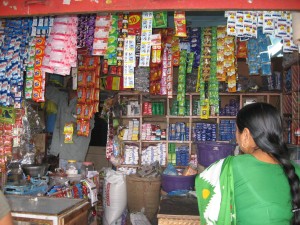 “T[t]he greatest contribution that companies can make to society, especially in developing countries, is through responsible, efficient and profitable mainstream investment that produces a variety of socio-economic multipliers1” (Nelson 2003).
“T[t]he greatest contribution that companies can make to society, especially in developing countries, is through responsible, efficient and profitable mainstream investment that produces a variety of socio-economic multipliers1” (Nelson 2003).
This sentence already implies the possibility how the private sector can contribute to development in poorer countries. But what is the so called “private sector”? To see just the big multinationals and well-known brands would be to short sighted. The private sector in poorer countries is made up of a huge amount of small and medium-sized enterprises (SMEs) which have between 11 and 250 employees (European Commission 2003). Whether domestic or non-domestic, each enterprise contributes in a different way to development, some with technology others with employment (Davies 2011). But what is development? Development can be defined in different ways and might mean different things to individuals. In this blog it is considered to be actions towards closing the gap between rich and poor and not only focused on economic growth.
Let us focus on the private sector: It offers employment, is a main driver of economic growth and provides goods and services for the society. It has huge advantages compared to the public sector like efficiency due to competition, flexibility and profits which can be used to reinvest. Why should it not be included in development aid?
The rapid urbanization challenges the traditional way of delivering development work and emphasizes the role of the private sector in an economy. Until now it was little engaged and some big NGOs like Oxfam were not very keen to work together with the private sector. Anyhow like Clermont et al. (2011) state it is important to engage the private sector, especially after a disaster to make relieve to recovery as smooth as possible. The applied policies should be focused on short term needs and long term development at the same time. It would be better for the long term recovery not to ignore the existing market and to work together with local enterprises to meet the basic needs of the society.
To increase the responsible participation of business in development, development cooperation agencies like GIZ (German) or Sida (Swedish), can do several things:
- First they should act as role model and establish corporate responsibility policies and transparency into their own business practice.
- Second they can support developing country’s government to create an investment friendly environment and help state owned companies to act in a corporate responsible way.
- The third step includes capacity building in the private sector and civil society to increase the use of corporate responsibility policies on the local level.
- Fourthly development cooperation agencies can focus on SMEs and support the ones which put corporate responsibility already in practice. One relating measure could be to create links between the domestic market and multinationals.
- The fifth and last area of action to foster corporate responsibility would be to give training to individuals to enable them to create links between different parties and hence decrease the rate of failing projects. (Fox, Prescottie 2004)
 The question is now how to implement the strengths of the private sector into sustainable development. There are many options to engage the private sector like public-private-partnerships, contracts, franchise, concession or private subscription (Cointreau). Each alternative should be chosen depending on which work should be done. Naturally there will be some activities where participation of each sector might not result in the requested target and where other sectors can perform better.
The question is now how to implement the strengths of the private sector into sustainable development. There are many options to engage the private sector like public-private-partnerships, contracts, franchise, concession or private subscription (Cointreau). Each alternative should be chosen depending on which work should be done. Naturally there will be some activities where participation of each sector might not result in the requested target and where other sectors can perform better.
Now we have seen that NGOs and development cooperation agencies can include the private sector, but what are the incentives for the private sector to engage itself especially in “poverty eradication related activities in developing countries” (Davies 2011)? For multinational companies the reasons may differ and are directly or indirectly connected to the goal of making profit. The incentives “range from addressing risk to exploring business opportunities” (Davies 2011) and can come from outside or inside.
The art is to combine the different goals of development aid and enterprises to make them to pull together. Just if a common target can be established the strengths of the parties can be combined to create unique projects which are sustainable in the long run and contribute to close the gap between rich and poor.
1“The eight core business multipliers: 1. Generate investment and income; 2. Produce safe products and services; 3. Create jobs; 4. Invest in human capital; 5. Establish local business linkages; 6. Spread international business standards; 7. Support technology transfer; 8. Build physical and institutional infrastructure” (Nelson 2003).
Resources, last accessed 29.12.2011:
Clermont C, Sanderson D, Sharma A, Spraos H (2011) Urban disasters – lessons from Haiti, http://www.alnap.org/pool/files/dec-haiti-urban-study.pdf
Cointreau S (year unknown) Private sector participation in developing countries, http://siteresources.worldbank.org/INTURBANDEVELOPMENT/Resources/336387-1249073752263/6354451-1249073991564/cointreaupsp.pdf
Davies P (2011) The Role of the Private Sector in the Context of Aid Effectiveness, http://www.oecd.org/dataoecd/7/58/47088121.pdf
European Commission (2003) Small and medium-sized enterprises (SMEs), SME Definition, http://ec.europa.eu/enterprise/policies/sme/facts-figures-analysis/sme-definition/index_en.htm
Fox T, Prescotti D (2004) Exploring the role of development cooperation agencies in corporate responsibility, http://www.eldis.org/fulltext/IIED_CSR1.pdf
Nelson J (2003) ECONOMIC MULTIPLIERS, Revisiting the core responsibility and contribution of business to development, http://commdev.org/content/document/detail/1026/





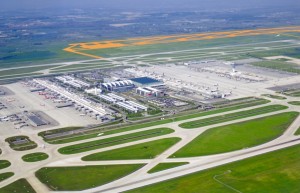

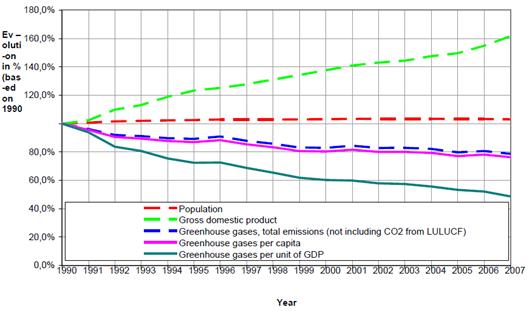
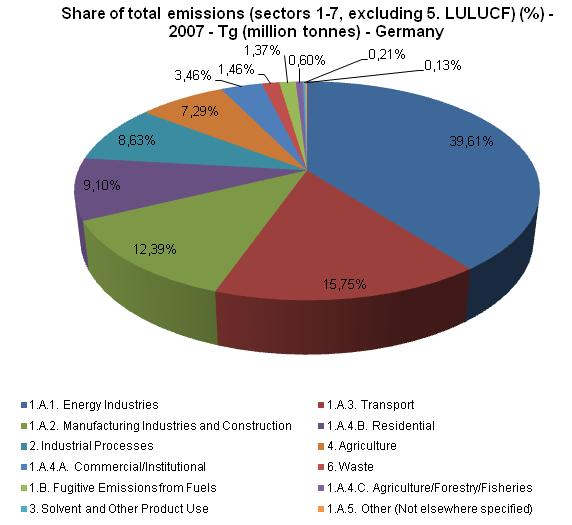
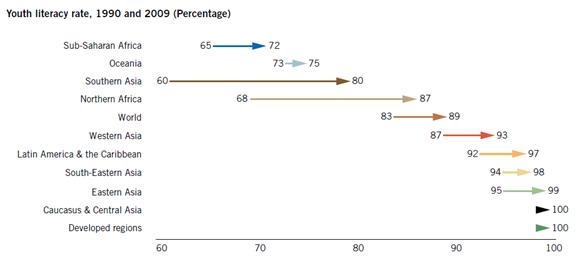
.png)
].gif)
.png)
].png)
].png)
].png)
.png)
].png)
.png)
